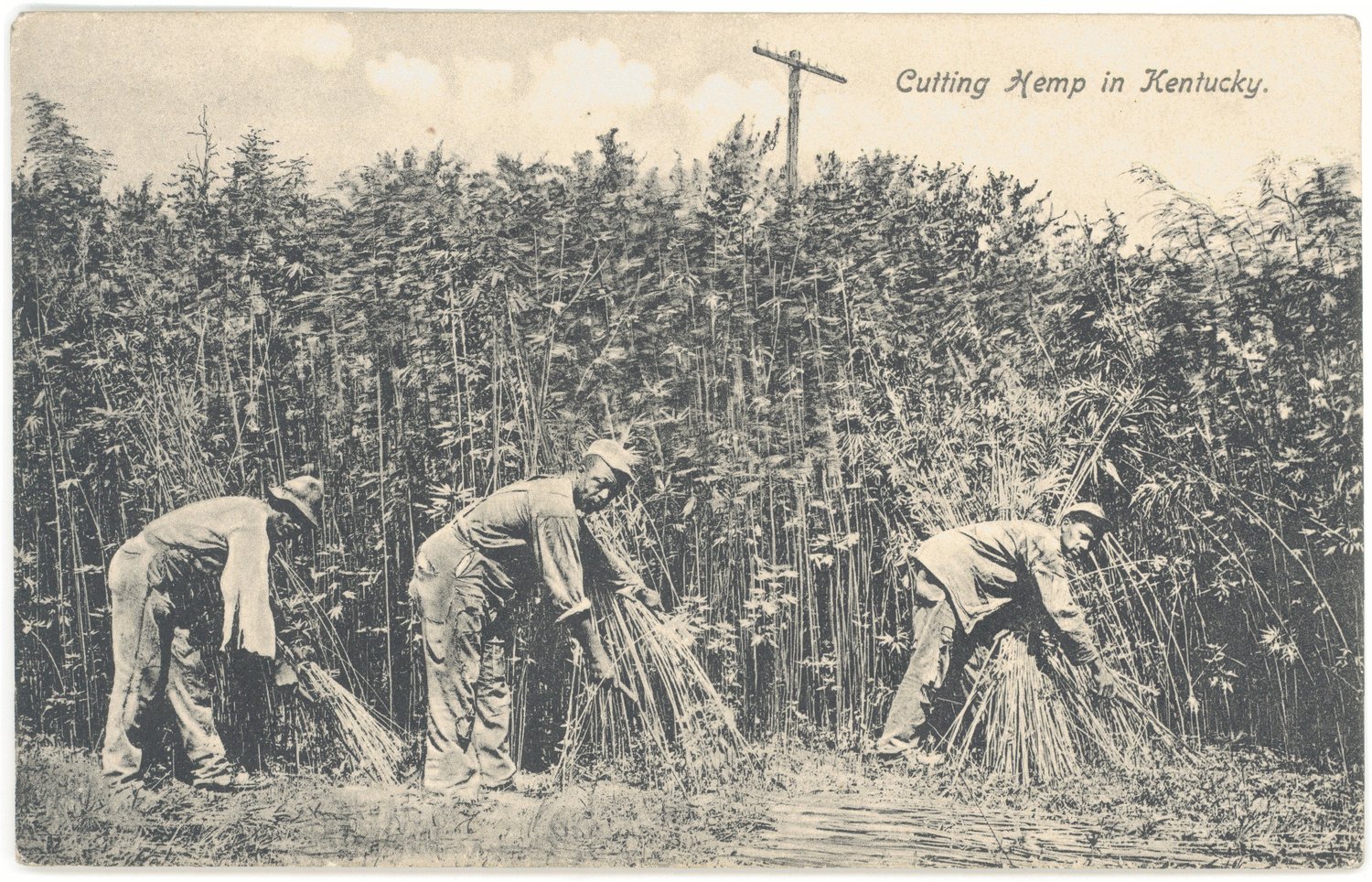
Kentucky Hemp Harvest Postcard
This postcard from 1910 shows the importance of hemp as a crop in Kentucky, US. It eventually stopped being profitable after slavery was abolished.


This postcard from 1910 shows the importance of hemp as a crop in Kentucky, US. It eventually stopped being profitable after slavery was abolished.
From 1606 CE, hemp fibre was commonly used in colonial North America for everyday purposes, from rope to paper and even tablecloth (demonstrating its strength as a versatile resource). The land proved to have an ideal climate for hemp cultivation, and the crop was therefore in constant demand. However, hemp was not a profitable crop due to the labor-intensive harvesting that was required in order to prepare the fibres.
This was not the case in pre-Civil War Kentucky, where enslaved people were still forced to process hemp. Hemp was such an important crop that whilst America was under Britain’s control, it was considered legal tender that Americans could ship to England to pay their taxes.
The barbaric practice of forcing native Africans onto European ships and taking them away from their homes to work for those who now claimed to ‘own’ them dates back to at least the 1400s. Not all Black people came to the colonies in this way, but by 1705, the passing of the Virginia Slave Codes removed the legal rights of all, whether free, enslaved, or indentured servants. The horrific practices of slavery were now legal.
The first hemp crop in Kentucky was grown in 1775 at Clarks Run Creek. During the late 18th century, as a steady supply of hemp seeds became available, a local industry around hemp began to develop. Enslaved people would be responsible for harvesting, spinning, weaving and then transporting the hemp to the market.
Plantation owners relied on the labour and extortion of the people they enslaved in order to profit from hemp cultivation. Many antebellum farmers are quoted as saying that during this period, hemp was the most profitable crop. Kentucky reached peak hemp production in 1850 but then began to decline steadily until the end of the Civil War in 1865, after which slavery was abolished.
The hemp crop eventually became unprofitable for the landowners, as they were now forced to pay the workers, albeit an incredibly low wage. This image is from a postcard dating back to 1910, so it is likely that the workers in the image were the descendants of enslaved families and were paid very little for back-breaking labour.
In the 21st century, Kentucky is once more a centre of hemp production following the 2018 Farm Bill which authorized the production of hemp and removed hemp and hemp seeds from the Drug Enforcement Administration’s (DEA) schedule of Controlled Substances.
Sign up to get the latest news about the museum, upcoming exhibitions and events.
Oudezijds Achterburgwal 148
+31 (0)20-6248926
amsterdam@hashmuseum.com
Monday to Thursday: 12:00 – 20:00
Friday to Sunday: 10:00 - 22:00
More information
Carrer Ample 35
+34 93 319 75 39
barcelona@hashmuseum.com
Every day: 11:00 – 20:00
More information
© 1987 - 2025 Hash Marihuana & Hemp Museum. All Rights Reserved. CSS Status 404